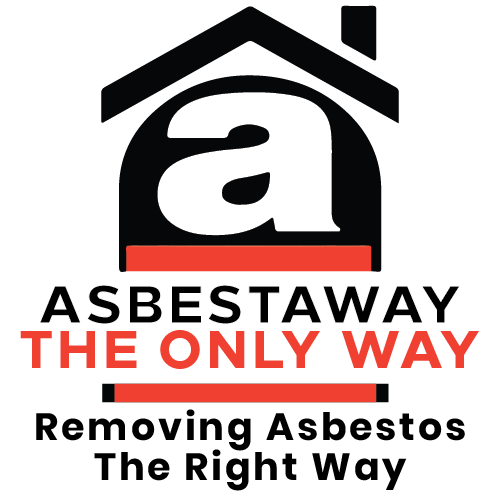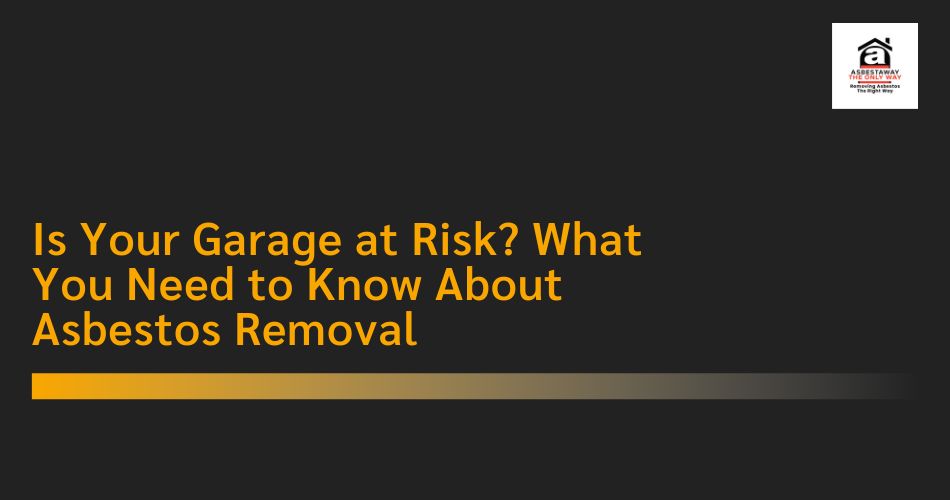Asbestos, once hailed as a wonder material, was used extensively in construction, automotive, and household applications due to its heat resistance and durability. However, over time, it became clear that exposure to asbestos can cause serious health problems, including lung cancer, asbestosis, and mesothelioma. The risks associated with asbestos have led to strict regulations and safety standards for its removal and disposal. If your garage was built before the 1980s, there’s a strong chance that it contains asbestos. This blog will guide you through the risks, identification, removal process, and safety precautions you need to know to deal with asbestos in your garage.
Understanding Asbestos and Its Dangers
Before we dive into how to deal with asbestos in your garage, it’s crucial to understand what asbestos is and why it’s so dangerous. Asbestos is a naturally occurring mineral made up of tiny fibers. These fibers are heat-resistant, durable, and fireproof, which made them popular in a variety of construction materials, including insulation, roofing shingles, flooring tiles, and even cement products.
The problem arises when asbestos-containing materials begin to degrade, release fibers into the air, and become airborne. These microscopic fibers can be inhaled, leading to serious respiratory diseases. Asbestos-related diseases have long latency periods, meaning symptoms may not appear until decades after exposure. The risks are particularly high for people who have had prolonged exposure to asbestos dust, such as construction workers, maintenance personnel, and residents of older buildings.
How to Identify Asbestos in Your Garage
If your garage was built before the 1980s or renovated using older materials, there’s a possibility that asbestos is present. The following are some common materials and locations in garages where asbestos can be found:
1. Insulation
- Asbestos was often used in insulation materials for garages, especially around pipes, ducts, and boilers. If the insulation is deteriorating or damaged, it could release asbestos fibers into the air.
2. Roofing and Siding
- Asbestos cement was commonly used for roofing and siding materials, including corrugated roofing sheets and shingles. These materials were valued for their fire-resistant properties and durability.
3. Flooring Materials
- Vinyl floor tiles or sheet flooring installed in garages before the 1980s may contain asbestos. These tiles often have a pattern or texture that can mask the presence of asbestos, making it harder to identify without proper testing.
4. Garage Doors
- Some older garage doors, particularly the insulated ones, may contain asbestos. This can be a source of exposure if the door material is disturbed or deteriorates over time.
5. Other Building Materials
- Asbestos was sometimes used in the cement and plaster materials that make up the structural components of garages, such as walls, ceilings, and foundation areas.
It’s important to note that asbestos is not dangerous unless it is disturbed. If the material is in good condition and undisturbed, it’s usually safe to leave it alone. However, if any material is damaged, cracked, or deteriorating, it can release dangerous asbestos fibers into the air.
Recognizing the Symptoms of Asbestos Exposure
Asbestos-related diseases generally develop over long periods of exposure. People who worked in construction or in environments with significant asbestos use are at a higher risk. If you suspect asbestos exposure, it’s important to recognize the symptoms early. Here are some signs to watch for:
- Shortness of breath: Difficulty breathing or persistent coughing can be symptoms of asbestosis, a disease caused by the inhalation of asbestos fibers.
- Chest pain: Pain in the chest or tightness can be an indication of asbestos-related lung conditions.
- Persistent cough: A dry, persistent cough that doesn’t go away can be linked to lung diseases associated with asbestos exposure.
- Weight loss and fatigue: Unexplained weight loss and fatigue are common symptoms of asbestos-related diseases, such as mesothelioma.
If you experience any of these symptoms, especially if you have a history of working with or being exposed to asbestos, it is essential to consult a healthcare provider immediately.
Why You Shouldn’t Remove Asbestos Yourself
While it might seem tempting to handle asbestos removal yourself, it is highly discouraged. Removing asbestos is a dangerous process that requires specialized knowledge, tools, and safety equipment to prevent harmful exposure. In addition, improper removal of asbestos can cause the fibers to become airborne, putting you and your family at serious risk.
Here are some reasons why DIY asbestos removal is not a safe option:
- Health Risks: Inhaling asbestos fibers, even in small amounts, can lead to serious health conditions years down the road.
- Legal Requirements: In many areas, asbestos removal is regulated by law. Special permits may be required, and removal must be performed by licensed professionals.
- Specialized Equipment: Professional asbestos removal teams use specialized protective gear, including respirators, disposable suits, and HEPA-filtered vacuums, to ensure that the area is properly cleaned and decontaminated.
Professional Asbestos Removal Process
If you have identified asbestos in your garage or suspect its presence, it is crucial to contact a certified asbestos removal professional. These experts will take the necessary precautions and follow legal and safety guidelines to safely remove and dispose of asbestos-containing materials.
Here’s what the professional asbestos removal process typically involves:
1. Inspection and Testing
- A professional will first inspect your garage to identify potential sources of asbestos. This may involve taking samples of suspected materials, which are then sent to a laboratory for testing. If asbestos is confirmed, the professional will provide you with a removal plan and a detailed cost estimate.
2. Planning and Preparation
- Once asbestos is confirmed, the professional will develop a removal plan. This plan will outline the scope of the work, including how the asbestos will be removed, the safety precautions that will be taken, and the methods of disposal. The area will be sealed off to prevent the spread of asbestos fibers.
3. Asbestos Removal
- During the removal process, the asbestos-containing materials will be carefully removed, bagged, and sealed. The area will be decontaminated using specialized equipment to ensure that no asbestos fibers remain.
4. Disposal
- Once the asbestos is removed, it will be transported to a licensed disposal site. Asbestos waste is highly regulated, and special procedures must be followed to ensure its safe disposal.
5. Post-Removal Inspection
- After the removal process is complete, a final inspection will be conducted to ensure that all asbestos has been properly removed and that the area is safe. Air quality tests may be performed to ensure that no asbestos fibers remain in the environment.
Asbestaway: A Safe Solution for Asbestos Removal
Asbestos removal is a complex and dangerous process, and it’s essential to hire a company that specializes in safe, effective asbestos removal. Asbestaway is a trusted company that offers professional asbestos removal services, ensuring that your home and garage are free from hazardous materials.
Asbestaway is fully certified and equipped with the latest safety gear and technology to safely remove and dispose of asbestos. Their team of trained professionals follows all local and federal regulations, ensuring that your home is not only safe during the removal process but also fully decontaminated afterward. Whether you’re dealing with asbestos in your garage, attic, or any other part of your home, Asbestaway provides comprehensive services to eliminate the risk of exposure.
By choosing a reliable service like Asbestaway, you can rest easy knowing that the job will be done properly, keeping both you and your family safe from the dangers of asbestos.
Preventing Future Asbestos Risks in Your Garage
Once asbestos is removed from your garage, it’s important to take steps to prevent future risks. Here are some tips:
- Regular Inspections: Have your garage inspected regularly by a professional, especially if it was built before the 1980s.
- Proper Maintenance: Keep your garage in good condition, as any cracks, damage, or wear and tear in materials can expose you to asbestos fibers.
- Replacement Materials: If you’re planning a renovation or replacement, ensure that you use asbestos-free materials.
Conclusion
Dealing with asbestos in your garage can be daunting, but it’s essential for your health and safety. The best course of action is to have a professional asbestos removal team assess the situation, remove the hazardous material, and ensure that your garage is safe to use. With proper removal and safety protocols, you can protect yourself and your loved ones from the dangers of asbestos exposure.
By staying informed, recognizing the risks, and hiring experts like Asbestaway, you can ensure that your home remains safe and asbestos-free for years to come.

